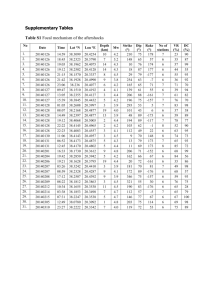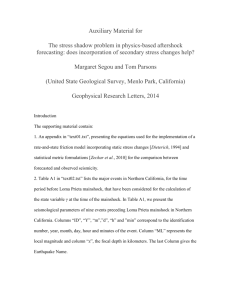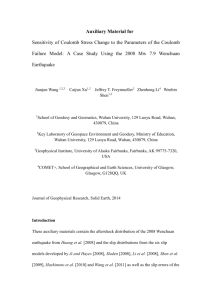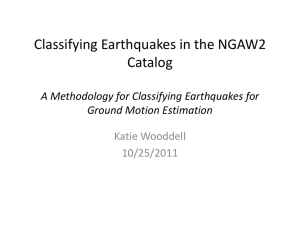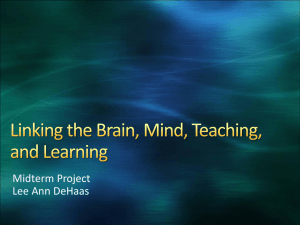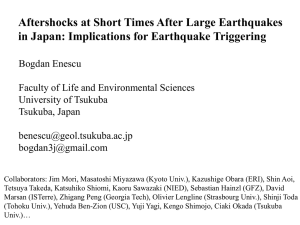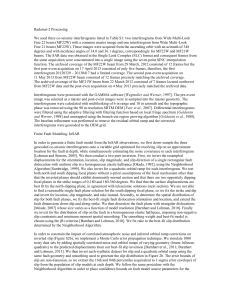The October 23, 2011 Van Ercis Earthquake (Eastern Turkey, Mw
advertisement
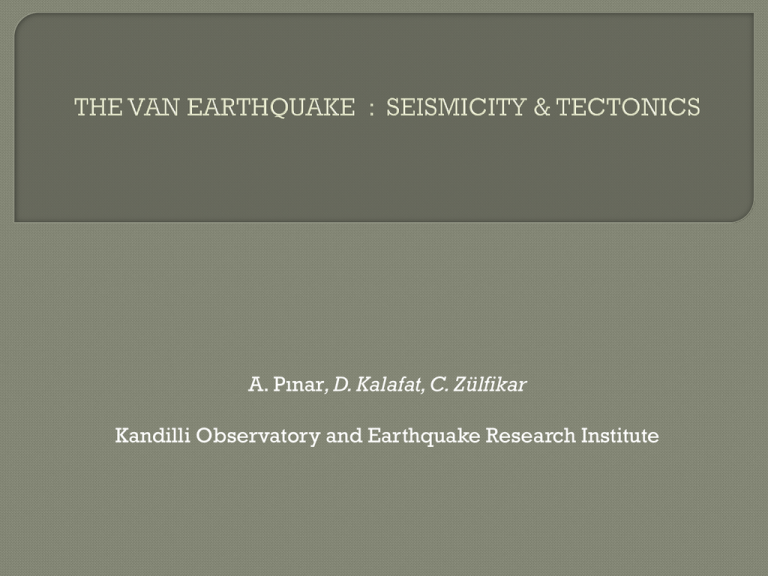
A. Pınar, D. Kalafat, C. Zülfikar Kandilli Observatory and Earthquake Research Institute To obtain the source characteristics of the mainshock and the aftershocks of the October 23, 2011 Eastern Turkey earthquake (Mw=7.2) To understand how the crust staying directly on the hot astenosphere (no mantle lithosphere) responds to the ongoing compression Improve our knowledge on the convergent boundary tectonics in Eastern Turkey We use the local broadband waveform records at stations operated by Kandilli Observatory to retrieve CMT solutions for 377 aftershocks (Mw>3.5) using the Kuge (2003) algorithm, We use the IRIS GSN data to obtain a slip model for the mainshock using the Kikuchi & Kanamori (2003) method, We use the ZMAP program to investigate spatio-temporal evolution of the stress field. Red contours display the lithospheric mantle thickness in km Eastern Anatolia Slab steepening and breakoff beneath a subduction-accretion complex (Keskin, 2003) Blue dashed lines are the northern and southern border of the Eastern Anatolian Accretionary Complex (EAAC) Şengör et al. (2003), GRL Instrumental Period (Albini et al. 2012) (1) October 23, 2011 Mw=7.2, Van (2) November 24, 1976 Mw=7.3 Çaldıran (3) May 6, 1930 Mw=7.1 Salmas (Iran) (4) April 28, 1903 MuşMalazgirt, Mw=7.0 Historical Period: 1275, 1646, 1696 Kocyigit (2011) Fault rupture on NNWdipping fault plane (surface deformation and aftershock Simple teleseismic waveforms distribution) Slip vector of the fault plane strike,dip, rake: 248, 36, 62 Slip vector of the fault plane strike,dip, rake: 248, 36, 62 Coseismic slip distribution based on the teleseismic COSMO co-seismic interferogram data Atzori et al (2011) Ercek Lake ITU field observations Kocyigit (2011) 1) 2) 3) The Lack of large aftershocks in the area of large co-seismic slip is noticable, To the NE and SW part of the ruptured area predominantly strike-slip mechanisms take place, In the western part of the source area reverse faulting dominates, Slip Distribution Stress Tensor all aftershocks Variance of stress tensor at each node & orientation of 1 Faulting type & orientation of 1 70<Rake<110 88 aftershocks 35<Rake<145 177 aftershocks 35<rake<145 compressive 177 aftershocks Hanging wall 35>rake>145 noncompressive 200 aftershocks Foot wall Two subevents Complex waveforms Seismic reflection profile (sp13) crossing Lake Van E-W (Toker and Şengör, 2011) Seismic reflection profile (sp10) crossing Lake Van NE-SW (Toker and Şengör, 2011) Although the maximum compressive stress axis Hmax is perpendicular to the strike of the north dipping fault plane the slip vector deviates about 30 degree from the Hmax direction, suggesting lateral escape The lack of large aftershocks in the area of large co-seismic slip is noticable, To the NE and SW part of the ruptured area predominantly strike-slip mechanisms take place, In the western part of the source area reverse faulting dominates, Some aftershocks show predominantly normal faulting mechanism, In the area of high co-seismic slip the stress field is heterogenuous, Clockwise and counterclockwise rotations of 1 axes are observed from the fault plane solutions of the aftershocks.
